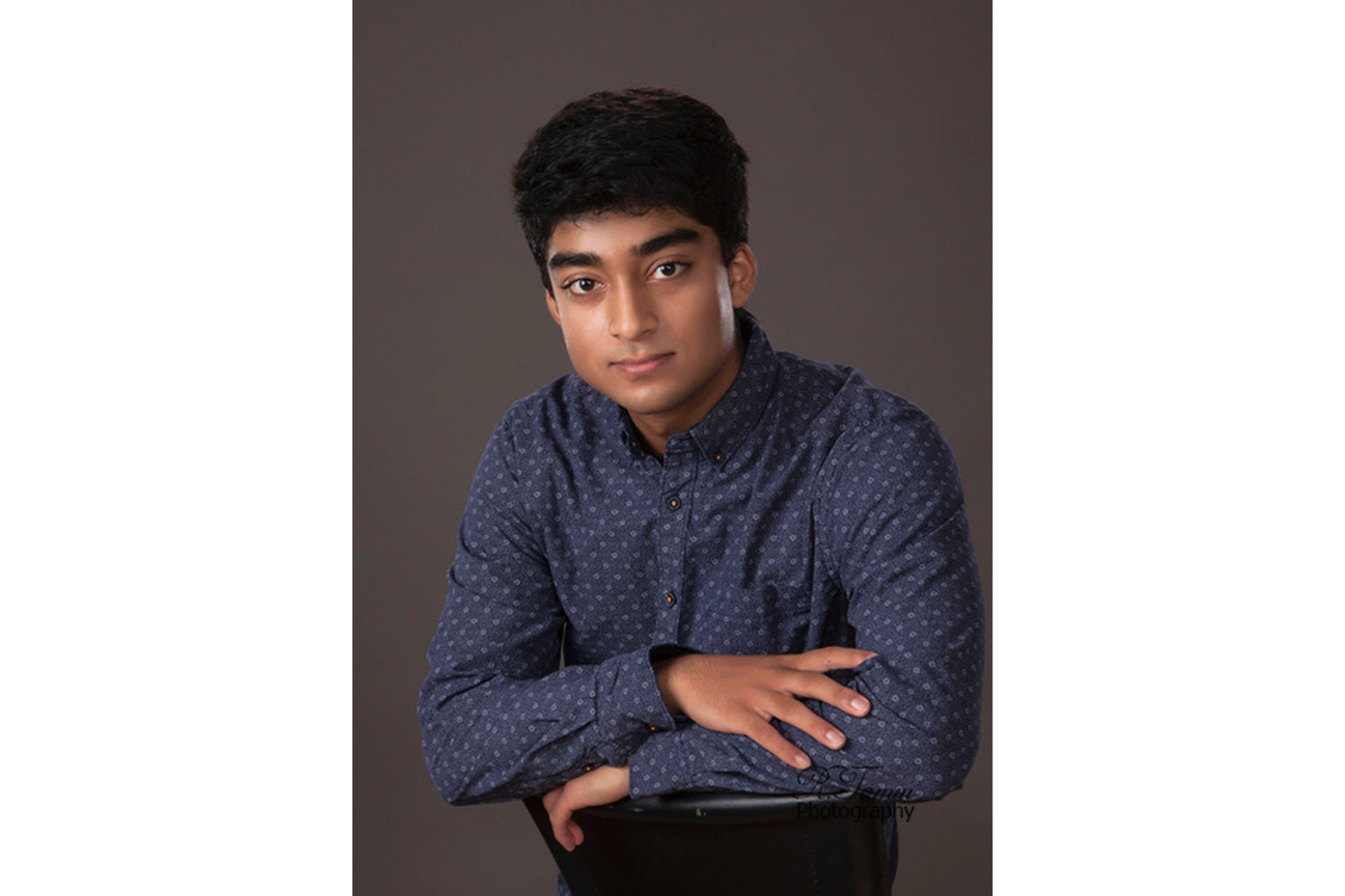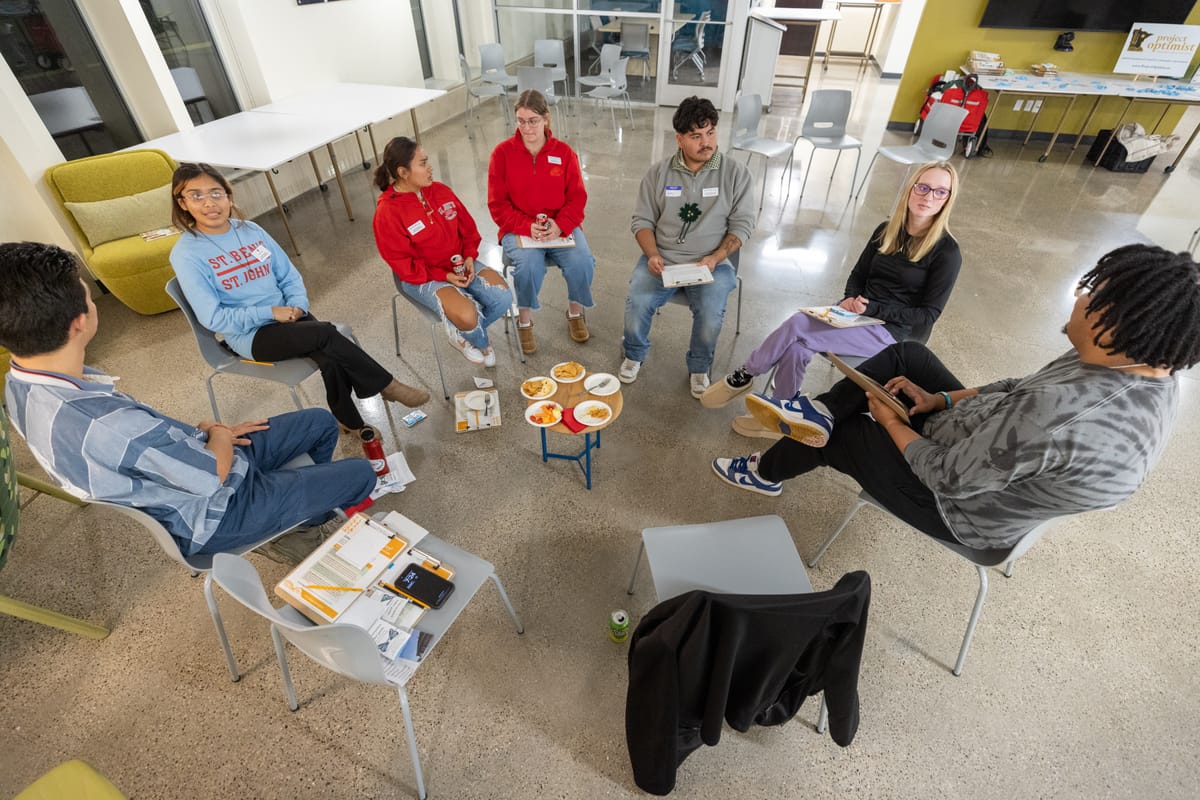Minnesota youth, seniors fight social isolation and loneliness
A young St. Cloud man started a program to connect senior citizens with students. The effort succeeded, but it’s tough to find students across Minnesota willing to organize similar events in their communities.

ST. CLOUD, Minn. — Fyzeen Ahmad noticed that seniors were isolated in 2020 and sought a solution.
Then a student at Tech High School in St. Cloud, Ahmad wanted to connect with residents at senior care facilities to help them feel less isolated when it became safe to gather.
“The sessions were really simple. We would maybe play music for 10-15 minutes at the beginning of the session, but the rest of the time was devoted to just talking,” Ahmad said. “We'd get into little groups with the older adults, and we'd bring board games and chess boards and whatnot.”

Social isolation and loneliness are problems for old and young Americans alike. The problems reached epidemic status in 2023 when the U.S. Surgeon General made a formal declaration to that effect.
Social isolation is worse among older adults in the U.S., according to the surgeon general’s advisory.
Among young people, loneliness is the bigger issue.
“Young adults are almost twice as likely to report feeling lonely than those over 65,” the advisory said.
Social isolation and loneliness correlate with adverse health conditions, such as depression, obesity, cardiovascular disease, and more, said Steve Hoover, healthy aging coordinator for the Central Minnesota Council on Aging.

“It is an all-mortality factor predictor, so it predicts death.” Hoover said. “In fact, at the same level of all those things that we normally think of that are mortality (indicators), things like obesity, lack of exercise, etc.”
Hoover pointed to a study that found lacking social connection has a health impact equal to smoking up to 15 cigarettes a day.

Project Blue Star is born
Ahmad’s efforts strive to help both age groups, and eventually became the organization Project Blue Star.
Residents enjoyed listening to music and spending time with the students afterward, Ahmad said.
The barrier to entry is low for residents, who simply have to show up to a session, Ahmad said.
Students appreciated the opportunity to connect with older adults, and learn about their lives. The sessions also help students learn and put into practice soft skills, such as making eye contact and learning how to make conversation.
 Project OptimistJen Zettel-Vandenhouten
Project OptimistJen Zettel-Vandenhouten
The organization seeks students to lead the way in their communities because they know their communities best, Ahmad said.
“In every community the same solution won't quite work, because especially if you come down more near the Cities, we have a lot of very diverse communities of elders,” Ahmad said. “You have the Hmong community, you have the East African Community, you have the African American (community) – we have so many communities here, and oftentimes they're found in enclaves of different older adults living together …. Which students will know the best way about how to interact with them, their languages, what they like, what they maybe don't like? Well, it's the students who live in that community.”
Sign up for Project Optimist's newsletter
Solution-focused news, local art, community conversations
It's free. No spam. Unsubscribe anytime.
Communities with more social connections tend to have healthier people, increased economic prosperity, more civic engagement, better preparation for natural disasters and resilience if disaster strikes, and less violence, the surgeon general’s advisory said.
Bumps in the road
There are many leaders at senior care facilities throughout the state who want to connect their residents with local students, but it’s been a challenge for Ahmad to find students to lead chapters.
“Finding those students and motivating them to get involved has probably been the biggest impediment these days,” he said.

Project Blue Star has only two requirements once a student takes the reins:
- The sessions must be held monthly, so that older adults and students can make connections over a consistent period of time;
- and there must be some sort of activity at the start of each session. Ahmad’s group played music because of his involvement in the school orchestra, but he said other students have presented projects, or given speeches.
Once a student becomes an organizer, it’s up to them to get friends and classmates on board.
 Project OptimistJen Zettel-Vandenhouten
Project OptimistJen Zettel-Vandenhouten
‘Get to it’
Anyone who is interested in combating social isolation and loneliness in their communities should figure out what they can do and just go for it, Ahmad said. They shouldn’t worry about starting a nonprofit organization or setting up a formal structure.
“If you have the time, and if you have the idea, get to it,” he said.
He also said it’s important for people to know their community so that their effort has a better chance for success.

What’s next
Ahmad is currently a junior at the University of Minnesota where he studies neuroscience and computer science. He teamed up with Hoover to study social isolation and loneliness in central Minnesota. Their work is currently being peer reviewed.
Project Optimist reported on the impact robust senior centers can have on older adults.
We will continue our reporting on social isolation and loneliness in the future with a story that will focus on a youth-specific effort.
